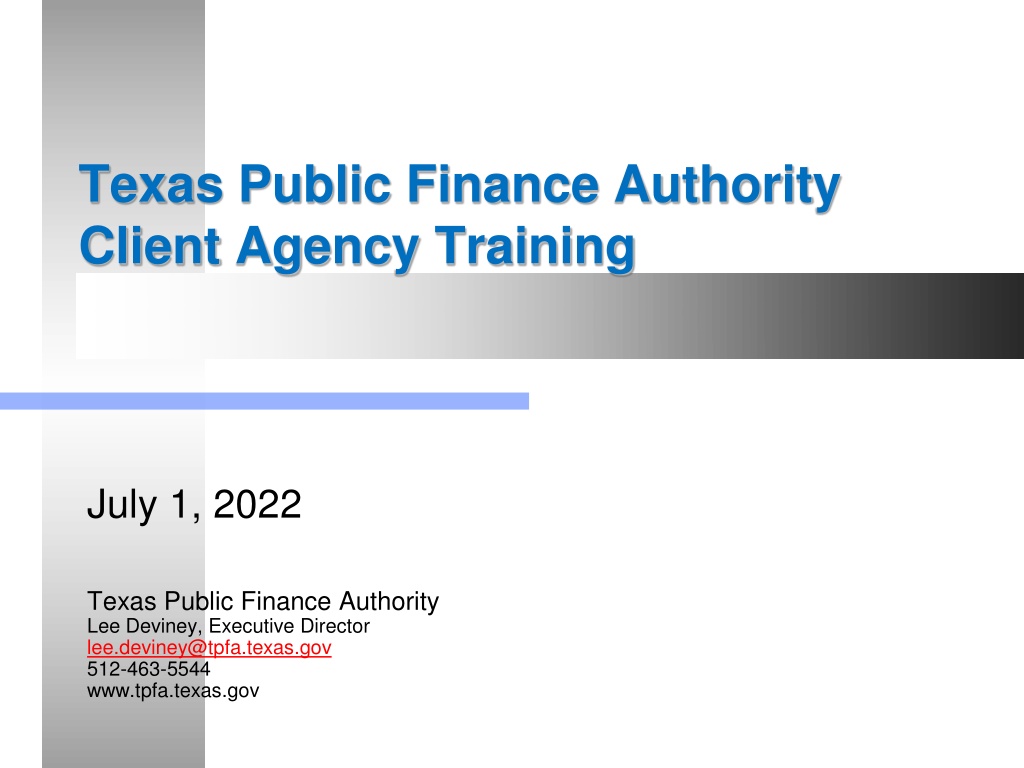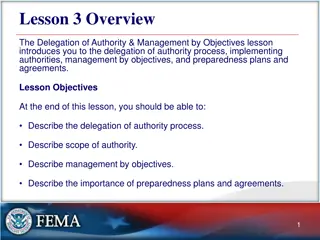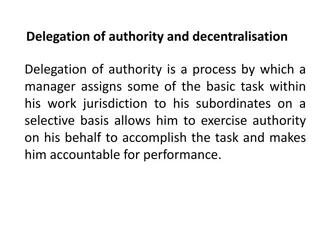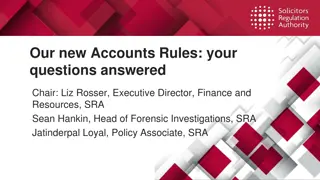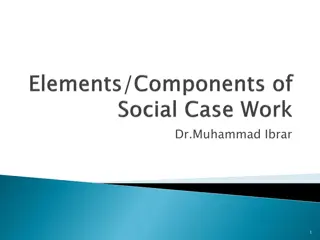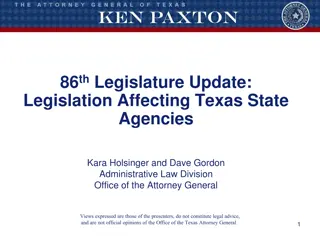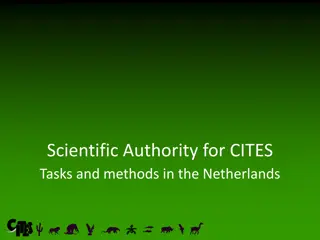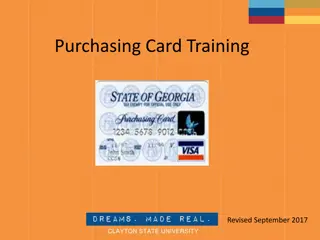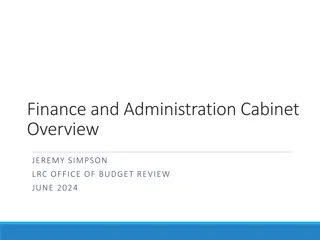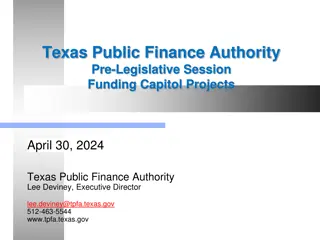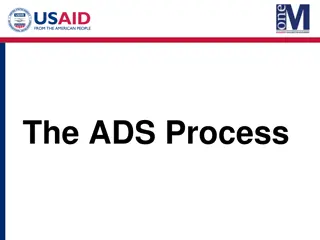Texas Public Finance Authority: Overview of Client Agencies and Issuance History
Explore the Texas Public Finance Authority (TPFA) and its role as the central state issuer for various state agencies, including Cancer Prevention and Research Institute of Texas, Texas Parks and Wildlife Department, and more. Learn about TPFA's issuance history, managing billions in bonds and providing significant savings. Understand the reasons for issuing debt and the process involved. Discover how debt issuance helps fund capital projects efficiently and align costs with project benefits and future revenues.
Download Presentation

Please find below an Image/Link to download the presentation.
The content on the website is provided AS IS for your information and personal use only. It may not be sold, licensed, or shared on other websites without obtaining consent from the author. Download presentation by click this link. If you encounter any issues during the download, it is possible that the publisher has removed the file from their server.
E N D
Presentation Transcript
Texas Public Finance Authority Client Agency Training July 1, 2022 Texas Public Finance Authority Lee Deviney, Executive Director lee.deviney@tpfa.texas.gov 512-463-5544 www.tpfa.texas.gov
Texas Public Finance Authority Issuing Agency TGC Ch. 1232 Board: Appointed by the Governor Issues state debt as authorized by the legislature Central state issuer for multiple state agencies including universities and other special purpose entities Administers the Master Lease Purchase Program 3
TPFA Client Agencies 1. Cancer Prevention and Research Institute of Texas 14.Texas Military Preparedness Commission (Texas Military Value Revolving Loan Fund) 15.Texas Parks and Wildlife Department 2. Texas Agriculture Finance Authority 16.Texas School for the Blind and Visually Impaired 3. Texas Commission on Environmental Quality (formerly Texas Low-Level Radioactive Waste Disposal Authority) 17.Texas School for the Deaf 18.Texas Southern University 4. Texas Department of Agriculture 19.Texas State Preservation Board 5. Texas Department of Criminal Justice 20.Texas Windstorm Insurance Association 6. Texas Department of Public Safety 21.Texas Workforce Commission 7. Texas Department of Transportation (Governor s Office Colonia Roadway Grant Program) Optional Use of TPFA as an Issuer Stephen F. Austin State University Texas State Technical College System General Academic Teaching Institutions as defined by Section 61.003 of the Texas Education Code 8. Texas Facilities Commission 9. Texas Health and Human Services Commission 10.Texas Historical Commission 11.Texas Juvenile Justice Department 12.Midwestern State University* 13.Texas Military Department (formerly Office of Adjutant General, and Texas Military Facilities Commission) *The 87th Legislature transferred Midwestern State University to the Texas Tech University System.
TPFA Issuance History Managing $3.928 billion of bonds as of 2/28/2022 Manage Issued $25.19 billion issued to date Provided savings of over $277.2 million to general revenue supported debt Savings 5
Why Issue Debt? Given that: 1. Capital projects deliver benefits over a period of time, 2. Beneficiaries grow with population growth, and 3. Revenues available for capital costs grow in future period Debt is issued to: 1. Conserve current revenue/manage liquidity, and 2. Match capital project costs to the realization of project benefits, and/or 3. Match project costs with future project revenues. 6
Issuance Process Life Cycle Planning Funding Ongoing Agency Identifies Project(s) Request for Financing Agency executes projects Prepare Cost and Timeline Estimates Determine Financing Method and Prepare Documents Monthly Status Report (until fully spent) Issue Debt and transfer Proceeds to agency Request Bond Proceeds and Debt Service Pay Debt Service 8
Client Agency Planning In preparation for the Legislative Session, Agency prepares 1. Project Description 2. Project Budget 3. Project Expenditure Schedule 4. Timing of Funding 5. Repayment Sources 6. Proposed or Existing Legal Authority for Project 9
Requesting Bond Authority Agency, LBB, or Legislative member provides TPFA with 1. Draft of proposed authorizing language 2. Amount to be requested 3. Description of the project 4. Estimated Expenditure schedule TPFA will prepare debt service estimates and recommend use of existing programs or available financing options based on the following information 10
Legislative Authorization The Legislature must authorize the specific project for which bonds are to be issued. Approvals Appropriations Specific project in statute or appropriations bill Use of bond proceeds To use bond proceeds Amounts sufficient to pay debt service 11
Request for Financing Required by TPFA Board Rules 34 Texas Administrative Code, Section 221.3 Submitted by Client Agency at least 30 days prior to being considered at a TPFA Board meeting. Includes Cover Letter, Resolution, Project Description, Budget, and Expenditure Schedule 12
Issuance Process Request for Financing Document Preparation Bond Sale Closing Project Funding Attorney General Approval Bond Review Board Approval TPFA Board Approval The issuance process from beginning to end generally takes 120-150 days but can be longer depending on the scope and complexity of the project, revenue source, or other factors. 13
Ongoing Responsibilities Agency TPFA Executes Project Monthly Status Report May need to request debt service Request UB authority for unspent proceeds for next biennium (see next slide) Pay debt service Monitor for IRS compliance Update agency on debt service requirements Monitor and request debt service appropriations 14
Client Agency Biennial Request If all of the authorization has not been issued or the agency has not encumbered all bond proceeds prior to the end of the biennium, ensure the ability to issue and expend those proceeds for the project in a subsequent biennium is continued; usually done by U.B. rider in agency s bill pattern. If the full amount authorized has not been approved by TPFA and BRB prior to the end of the biennium, agency will need to ensure the authorization is continued; also usually done in the agency s bill pattern. For certain projects, debt service that is appropriated to the agency will need to be requested by the agency in their LAR. (TPFA will provide an estimate before the LAR process and updates as needed). 15
What is a Debt Instrument? A debt instrument is a contract for a loan between a lender and a borrower specifying: Term or maturity for debt security is the due date for the loan (e.g., years, months, days) Interest rate on the bond (e.g., 5%) Debt service schedule or repayment schedule, (e.g., monthly, semi-annually or annually) Revenue source pledged to repay the loan 17
Common Terms Par Face value of a security Discount or Premium Amount the price of a security is less than or exceeds par value Coupon Interest rate paid on a security Fixed rate Interest rate that does not fluctuate during the life of the security Variable rate Interest rate that resets at fixed intervals based on a predetermined index or formula Yield Investor rate of return Debt Service the repayment of the borrowed funds that consist of both principal (amount borrowed) and/or interest 18
Types of Debt Instruments CommercialPaper Up to 270 days and interest rate resets at maturity if not redeemed. Notes Up to 5 years. Fixed or Variable Rate Bonds 5 30 years or more. Fixed or variable interest rate. 19
Taxable vs. Tax-Exempt Debt Earnings are taxed at federal and state/local levels Exempt from private use restrictions Examples include corporate bonds, sports facility, Cancer Prevention and Research Institute of Texas projects grants Taxable Earnings exempt from taxation which allows for investors to accept a lower coupon Subject to federal tax law limitations on investment and use of proceeds Examples include roads, schools, government buildings Tax-Exempt 20
AAA MMD Historical Yield Comparison 3.00 2.75 2.50 2.25 2.00 1.75 MMD (%) 1.50 1.25 1.00 0.75 0.50 0.25 0.00 0 5Y 10Y 15Y 20Y 25Y April 1, 2022 December 31, 2021 April 1, 2021 April 1, 2020 Source: Thomson Reuters Municipal Market Data 21
Debt Structure Bonds can be sold with a variety of structures Maturities occurring at a defined interval such as 6 months or annually Zero coupon or Capital Appreciation Bond that pay no interest until maturity Level principal or level debt service 22
Maximum and Minimum AAA MMD Yields 7.00 6.00 5.00 4.00 % Yield 3.00 2.00 1.00 0.00 1 2 3 4 5 6 7 8 9 10 11 12 13 14 15 16 17 18 19 20 21 22 23 24 25 26 27 28 29 30 Since January 1, 2000 Since January 1, 2018 April 1, 2022 Source: Thomson Reuters Municipal Market Data 23
Long Term vs. Short Term Rates 1992 - 2022 9% 8% 7% 6% 5% 4% 3% 2% 1% 0% BBI-20 SIFMA Swap Index 24
Credit Ratings Effect On Interest Rates Historical 20-Year Tax Exempt Interest Rates 9.0% AAA GO 20 yr BAA GO 20 yr 8.0% 7.0% 6.0% 5.0% 4.0% 3.0% 2.0% 1.0% 0.0% 25
Refundings Used to: Refinance Issue new debt to pay off old debt Lower interest rates Change bond covenants Change repayment schedule ( Restructure ) Can be a current refunding or an advance refunding A current refunding is one in which the outstanding (refunded) bonds are redeemed within 90 days of the date the refunding bonds are issued. In an advance refunding, the refunded bonds are redeemed more than 90 days from the date the refunding bonds are issued. 26
General Obligation (GO) Debt Legally secured by a constitutional pledge of the first monies coming into the State Treasury that are not constitutionally dedicated for another purpose Constitutional Pledge Approvals needed per Tx. Const. Art III Sec. 49: 2/3 vote of both houses of the legislature and Majority of Texas Voters Mental health facilities (HHSC), Prisons (TDCJ),Parks (TPWD), Cancer Prevention and Research Institute of Texas (CPRIT), Transportation (TxDOT) Examples: 28
Revenue Debt Secured by a specific revenue source such as rent payments Pledge Does not require voter approval but requires approval of the Legislature Approvals needed College and University debt, certain water development bonds, mortgage revenue bonds Examples: 29
Master Lease Purchase Program TPFA issues revenue debt to finance a purchase of personal property, equipment, (under its Master Lease Purchase Program (MLPP)) or buildings TPFA holds the title to the property and leases the property to the client agency Client agency makes lease payments to TPFA from appropriations to the client agency TPFA uses the lease payments to pay debt service 30
Master Lease Process (Equipment) TPFA pays Vendor, takes title to Project and leases it to Agency Procures Project Agency Vendor Payment Lease Title Agency makes Lease Payments to TPFA (GR appropriation) TPFA issues Commercial Paper to provide funding to pay invoices TPFA Commercial Paper Dealer TPFA pays Debt Service 31
Master Lease Process (Building) TPFA and Client Agency enter into Lease and Lease Purchase Agreement. Agency makes payment. Payment Agency Building Owner/Vendor Procures Project Proceeds Lease and Lease Purchase Agreement Lease Payments (GR appropriation) TPFA issues Commercial Paper to provide funding to agency Proceeds Commercial Paper Dealer TPFA TPFA pays Debt Service 32
Self-Supporting Repaid with revenues other than general revenues, can be either GO or revenue debt Examples: o GO: Water Development Board debt repaid from loans for water and wastewater projects, Mobility Fund Transportation Bonds o Revenue: University revenue financing system debt, Texas Dept. of Housing and Community Affairs single family mortgage debt 33
Not Self-Supporting Repaid with state general revenues, can be either GO or revenue debt Examples: o GO: Higher Education Fund debt, most TPFA debt, CPRIT debt, Prop 12 HIGO transportation debt o Revenue: TPFA MLPP, Building Revenue Bonds 34
Finance Team Bonds and Notes: Financial Advisor Bond Counsel Underwriter(s) Rating Agencies Commercial Paper Transactions also include: Dealer Paying Agent Liquidity Provider 36
Methods of Sale Issuance has unusual financial or legal structure Issuance timing important (e.g., refunding) Bond sale requires more pre-marketing effort Negotiated (most common) Straightforward structure Well-known credit and security pledge Size and ratings often attract bidders Competitive Unique financial or legal structure Sold directly to purchaser Not underwritten Private Placement 37
Document Preparation TPFA Resolution Official Statement Rating Agency Presentation Counsel Opinion Bond Purchase Agreement Financing or Lease Agreement between TPFA and Agency 38
Pricing and Closing Bonds are marketed to investors 1-2 weeks before sale An order period is set with an initial price and investors put in orders Sale is negotiated and accepted via a Bond Purchase Agreement Closing occurs 1-2 weeks after the sale and funding occurs 39
Key Takeaways Financing is a tool to maximize and efficiently use funding Planning is key, the earlier the better Work with TPFA before and after requesting and receiving authority With financing, goals and projects can be accomplished sooner Match project costs with future project revenues and use 40
